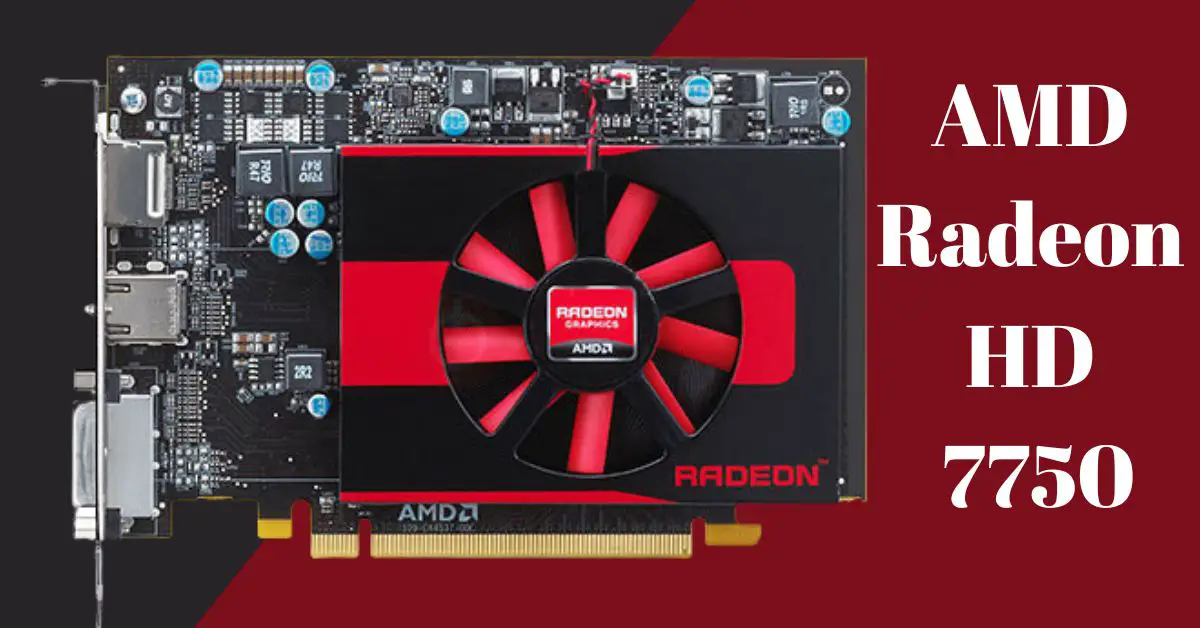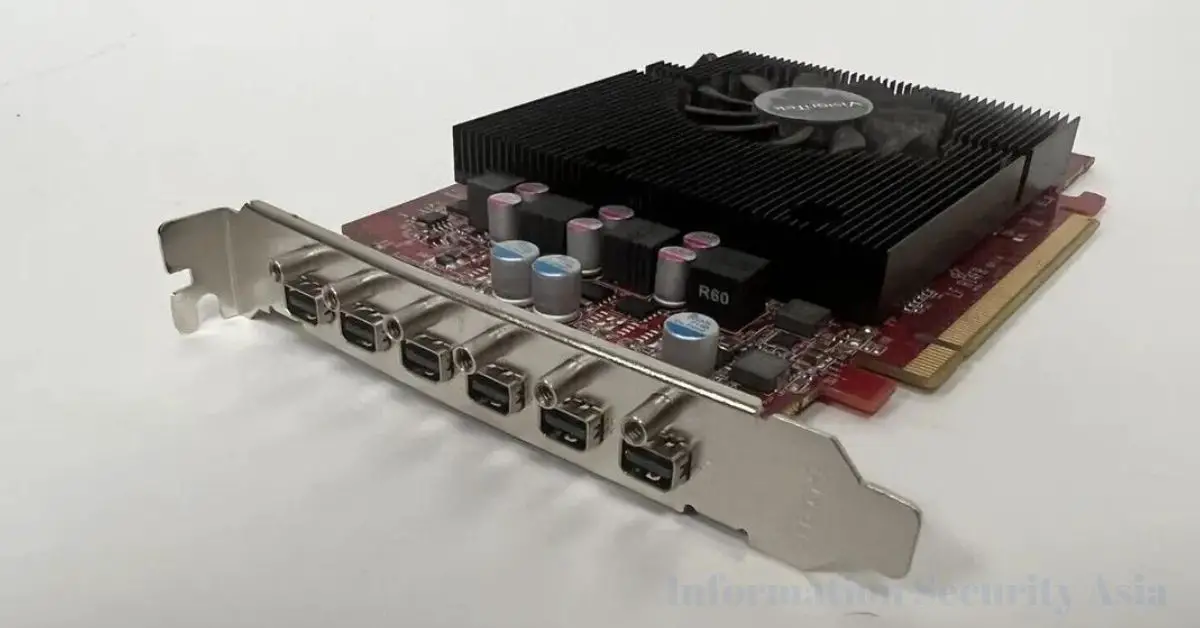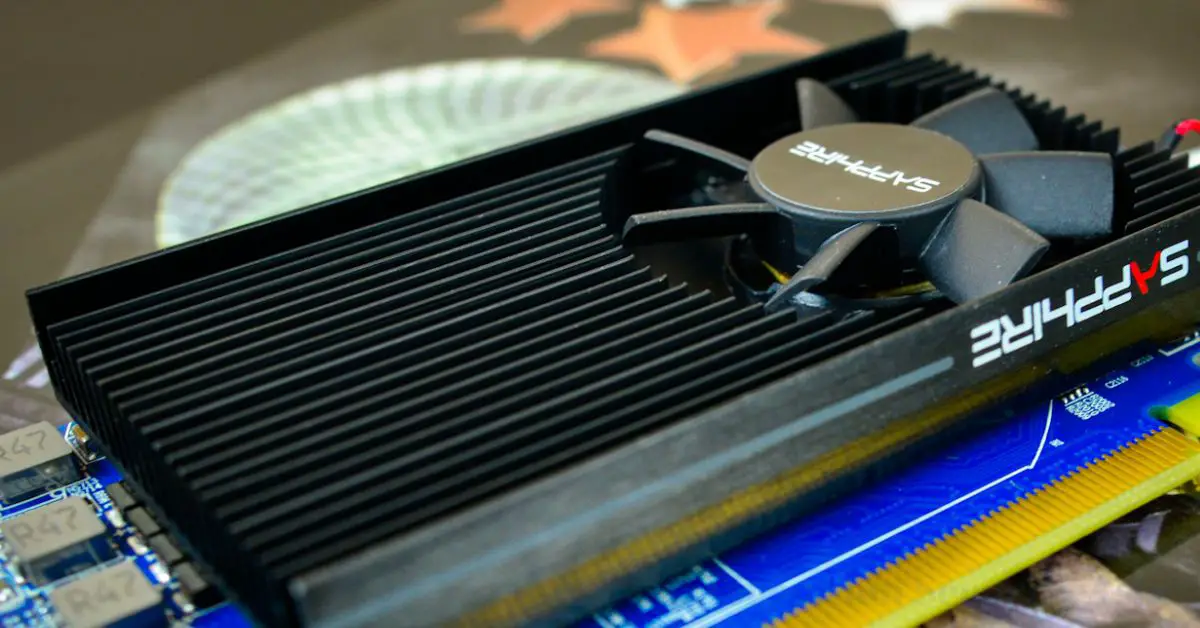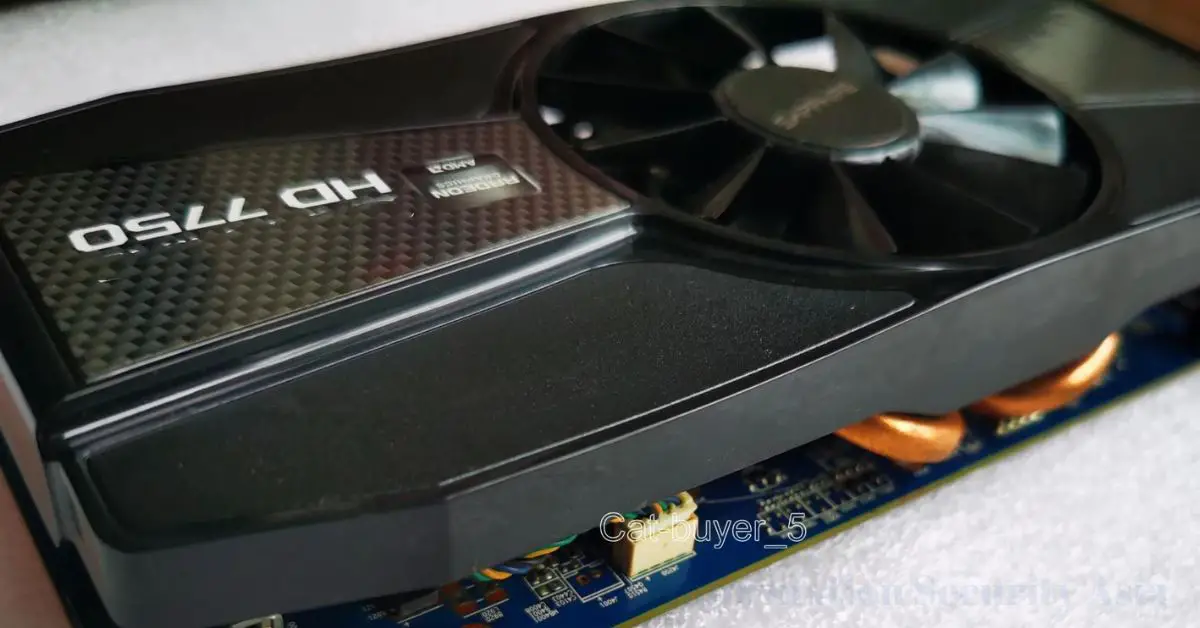As I witness the relentless advancement of technology, I find myself drawn back to the significance of the Radeon HD 7750, uncovering a captivating narrative of its era. In this article, I aim to explore the core architecture, distinguishing features, gaming capabilities, and lasting influence of this GPU.
From its remarkable traits to its position within the competitive landscape and its relevance in today’s digital domain, I embark on a journey to delve into the enduring legacy of the AMD Radeon HD 7750.
The AMD Radeon HD 7750 was a mid-range graphics card introduced by AMD (formerly ATI Technologies) as part of its Radeon HD 7000 series. Released in February 2012, it was designed to offer decent gaming performance and graphical capabilities at an affordable price point.
—
Contents
- What is AMD Radeon HD 7750?
- AMD Radeon HD 7750: Technical Specifications
- AMD Radeon HD 7750: Performance and Gaming Capabilities
- AMD Radeon HD 7750: Features and Technologies
- AMD Radeon HD 7750: Comparison with Competing GPUs
- AMD Radeon HD 7750: Compatibility and System Requirements
- AMD Radeon HD 7750: Evolution and Successor Models
- AMD Radeon HD 7750: Future Prospects and Longevity
- Frequently Asked Questions
- 1. What are the standout features of the AMD Radeon HD 7750?
- 2. How does the Radeon HD 7750 compare to its competitors in terms of performance?
- 3. What are the system requirements needed to run the Radeon HD 7750?
- 4. Can the Radeon HD 7750 support multiple monitors?
- 5. Is the Radeon HD 7750 suitable for gaming purposes?
- 6. How does the Radeon HD 7750 handle power consumption and heat dissipation?
- 7. Are there any known compatibility issues with certain CPUs or motherboards?
- 8. Can the Radeon HD 7750 be overclocked for improved performance?
- 9. Is the AMD Radeon HD 7750 still relevant for modern usage?
What is AMD Radeon HD 7750?
The Radeon HD 7750 was built on the 28nm GCN (Graphics Core Next) architecture, featuring 512 stream processors, a core clock speed of around 800 MHz, and a 1GB GDDR5 memory with a 128-bit memory interface. It supported DirectX 11 and was known for its power efficiency, drawing power solely from the PCIe slot without requiring an additional power connector.
The AMD Radeon series encompasses a wide range of graphics cards produced by AMD, catering to various market segments from entry-level to high-end gaming and professional applications. The Radeon series has undergone multiple iterations and improvements over the years, introducing advancements in performance, power efficiency, and features like AMD’s FreeSync technology for smoother gaming experiences.
The significance of the Radeon HD 7750 lay in its positioning as a budget-friendly yet capable graphics card for mid-range gaming and multimedia usage. It targeted gamers looking for decent 1080p performance in less demanding titles or those interested in enhancing their multimedia experiences without breaking the bank. Additionally, its power efficiency made it an attractive choice for users seeking a graphics upgrade without needing to upgrade their power supply.
Positioned between entry-level and higher-end graphics cards in its series, the Radeon HD 7750 provided a balance between performance, affordability, and power efficiency. While it might not have been the most powerful option available at its time of release, it offered a viable solution for gamers and users seeking a competent graphics upgrade without the associated high costs or power requirements of more performance-oriented cards.
AMD Radeon HD 7750: Technical Specifications
- GPU Architecture and Chipset: Built on the 28nm GCN (Graphics Core Next) architecture, codenamed Cape Verde.
- Core Clock Speed: Approximately 800 MHz.
- Memory Specifications: 1GB GDDR5 VRAM with a 128-bit memory interface. Memory clock speed varied between manufacturers but typically around 1125 MHz (4.5 Gbps effective).
- Interface and Connectivity Options: Supported PCI Express 3.0 interface. Connectivity included options like DisplayPort 1.2, HDMI 1.4a, Dual-link DVI.
- Power Requirements and Efficiency: The Radeon HD 7750 was known for its power efficiency, drawing all required power from the PCIe slot. Its typical power consumption ranged around 55-60 watts under load, making it suitable for systems without dedicated power connectors.
AMD Radeon HD 7750: Performance and Gaming Capabilities
- Benchmark Performance: In benchmarks like 3DMark, the Radeon HD 7750 scored competitively in its class, offering decent performance for its time, especially in mid-range gaming.
- Gaming Performance and Frame Rates: Its performance varied based on the game and settings, but it was capable of handling older and less demanding titles at 1080p with playable frame rates. In more demanding games, users might need to lower settings for smoother gameplay.
- Popular games like League of Legends, Dota 2, and older AAA titles could run smoothly at moderate settings. However, more graphically demanding games like AAA titles released around its time would require lower settings for playable frame rates.
- Overclocking Potential: The Radeon HD 7750 had limited overclocking potential due to its power-efficient design. While some users could achieve slight performance gains through overclocking, the headroom for significant performance boosts was relatively constrained compared to higher-end GPUs.
- Results: Overclocking typically resulted in marginal performance improvements, often in the range of 5-10%, depending on the specific card and silicon lottery.
Overall, the AMD Radeon HD 7750 offered a balance between power efficiency and mid-range gaming performance at the time of its release, making it a suitable choice for users looking for a cost-effective upgrade without requiring a high-power PSU or breaking the bank for higher-end GPUs.
AMD Radeon HD 7750: Features and Technologies
- DirectX and OpenGL Support: The AMD Radeon HD 7750 supported DirectX 11 and OpenGL 4.2, allowing compatibility with the latest gaming titles and rendering techniques at the time of its release.
AMD-Specific Features
- Eyefinity Technology: Enabled the use of multiple monitors from a single graphics card, enhancing productivity and immersive gaming experiences by expanding the desktop across multiple displays.
- CrossFire Technology: Allowed users to pair two Radeon HD 7750 cards for increased performance in supported games and applications through parallel GPU processing.
Multimedia Capabilities
- Video Playback: The HD 7750 supported hardware-accelerated video playback, including high-definition video decoding for formats like H.264, VC-1, MPEG-2, and more.
- Streaming and Encoding: It featured AMD’s Unified Video Decoder (UVD) for improved streaming and video encoding capabilities.
AMD Radeon HD 7750: Comparison with Competing GPUs
- NVIDIA Competitors: At the time of its release, the AMD Radeon HD 7750 competed primarily against NVIDIA’s GeForce GTX 650 and GTX 650 Ti. Compared to these NVIDIA GPUs, the HD 7750 offered comparable performance in many cases while being more power-efficient due to its lower power requirements.
Advantages of Radeon HD 7750
- Power Efficiency: One of the standout advantages was its power efficiency compared to some competing GPUs, as it drew power exclusively from the PCIe slot without requiring additional connectors.
- Price-to-Performance Ratio: It often provided a better price-to-performance ratio in its segment, making it an attractive choice for budget-conscious consumers.
Disadvantages in Comparison
- Performance Limitations: In comparison to higher-tier GPUs from both AMD and NVIDIA, the HD 7750 had limitations in handling more demanding modern games at higher settings and resolutions.
- Limited Overclocking Potential: Its limited overclocking potential compared to some competitor models could be considered a downside for users seeking substantial performance gains through overclocking.
While the Radeon HD 7750 competed well in its price range, offering competitive performance and notable features, it had limitations in handling the latest games at higher settings, which some competing GPUs could address more effectively.
AMD Radeon HD 7750: Compatibility and System Requirements
Operating System Compatibility: The AMD Radeon HD 7750 was compatible with various operating systems, including:
- Windows: Versions such as Windows 7, Windows 8, Windows 8.1, and Windows 10, both 32-bit and 64-bit editions.
- Linux: Support for different Linux distributions with compatible drivers available from AMD’s website.
System Requirements for Optimal Performance: The Radeon HD 7750 had relatively moderate system requirements for optimal performance:
- A PCI Express x16 slot available on the motherboard.
- Adequate power supply; however, one of the notable features was its ability to draw power directly from the PCIe slot without additional connectors, making it compatible with a wide range of systems.
- While specific CPU and RAM requirements varied based on the applications and games used, pairing it with a mid-range to high-end processor and sufficient RAM was recommended for balanced performance.
AMD Radeon HD 7750: Evolution and Successor Models
Evolution of the Radeon Series
The Radeon series has seen consistent evolution and advancement in GPU architectures, features, and performance capabilities over the years. It progressed from the Radeon HD 7000 series, which included the HD 7750, through subsequent iterations, introducing enhanced architectures, improved power efficiency, and expanded feature sets.
Successor Models or Series
The successor to the Radeon HD 7750 came in the form of the Radeon R7 250X, which belonged to the AMD Radeon Rx 200 series. The R7 250X offered improved performance over its predecessor, leveraging advancements in architecture and technology. It provided a moderate performance boost for users seeking an upgrade from the HD 7750 while maintaining a similar price range and power efficiency.
AMD Radeon HD 7750: Future Prospects and Longevity
As technology progresses, the future relevance and longevity of the AMD Radeon HD 7750 are impacted by several factors:
Future Relevance
- Gaming and Software Advancements: As newer games and software demand more powerful hardware, the Radeon HD 7750 may struggle to keep up with the performance requirements of upcoming titles. While it can still handle older or less demanding games and some multimedia tasks, its future relevance for the latest and more graphically demanding software may diminish.
- Technological Advancements: As newer GPU architectures and technologies emerge, the Radeon HD 7750 might become outdated in terms of features and performance capabilities. Advancements in rendering techniques, higher display resolutions, and more complex graphical demands may surpass the capabilities of this older GPU.
Longevity in Performance and Usability
- Performance Expectations: Over time, the Radeon HD 7750’s performance for newer applications and games will likely degrade compared to modern GPUs. Users may find it challenging to maintain acceptable frame rates and graphical fidelity in newer releases without significantly lowering settings.
- Usability for Basic Tasks: Despite its aging status in gaming and demanding tasks, the HD 7750 could still remain usable for basic computing needs, office work, web browsing, and playing older or less demanding games at lower settings.
Final Thoughts:
While the AMD Radeon HD 7750 served well in its time and still has usability for certain tasks, its future relevance and longevity for high-end gaming and demanding applications are limited due to technological advancements.
Frequently Asked Questions
1. What are the standout features of the AMD Radeon HD 7750?
- Power Efficiency: The Radeon HD 7750 was known for its low power consumption, drawing power solely from the PCIe slot without needing additional connectors.
- Eyefinity Support: It supported AMD’s Eyefinity technology, allowing users to connect multiple monitors for an expanded viewing experience.
2. How does the Radeon HD 7750 compare to its competitors in terms of performance?
In its time, the Radeon HD 7750 offered competitive performance in its price range. However, compared to higher-tier GPUs or newer models, it may lag behind in handling modern, demanding games at higher settings.
3. What are the system requirements needed to run the Radeon HD 7750?
- A motherboard with a PCI Express x16 slot.
- Adequate power supply (although it draws power from the PCIe slot, a suitable PSU is recommended for the entire system’s stability).
- Compatibility with Windows or Linux operating systems.
- A decent CPU and sufficient RAM for optimal performance.
4. Can the Radeon HD 7750 support multiple monitors?
Yes, the Radeon HD 7750 supports AMD’s Eyefinity technology, allowing for multiple monitor setups from a single graphics card.
5. Is the Radeon HD 7750 suitable for gaming purposes?
It can handle older or less demanding games at moderate settings and lower resolutions. However, for modern and more graphically demanding games, it might struggle to deliver satisfactory performance at higher settings.
6. How does the Radeon HD 7750 handle power consumption and heat dissipation?
The HD 7750 was praised for its power efficiency, drawing low power from the PCIe slot and thus generating less heat compared to higher-end GPUs.
7. Are there any known compatibility issues with certain CPUs or motherboards?
Generally, the Radeon HD 7750 was compatible with a wide range of motherboards and CPUs. However, occasional compatibility issues might arise due to specific configurations or outdated drivers.
8. Can the Radeon HD 7750 be overclocked for improved performance?
While some users attempted overclocking, the HD 7750 had limited overclocking potential due to its power-efficient design.
9. Is the AMD Radeon HD 7750 still relevant for modern usage?
For basic computing tasks, older games, or multimedia purposes, the HD 7750 may still be usable. However, for modern gaming or demanding applications, its relevance has diminished due to advancements in technology and performance requirements of newer software.
The AMD Radeon HD 7750, with its specific technical specifications and performance capabilities, holds a unique position in the GPU market. Its balance between performance and power efficiency, along with various features, makes it a viable option for a range of users, although its relevance may have shifted over time.
Understanding its strengths and limitations can help users make informed decisions about its usage or potential alternatives in the current landscape.

Information Security Asia is the go-to website for the latest cybersecurity and tech news in various sectors. Our expert writers provide insights and analysis that you can trust, so you can stay ahead of the curve and protect your business. Whether you are a small business, an enterprise or even a government agency, we have the latest updates and advice for all aspects of cybersecurity.




